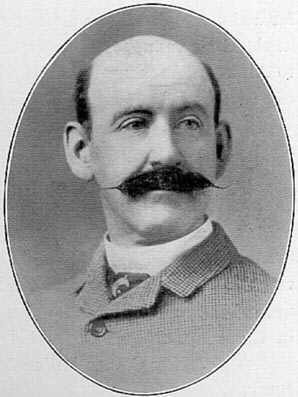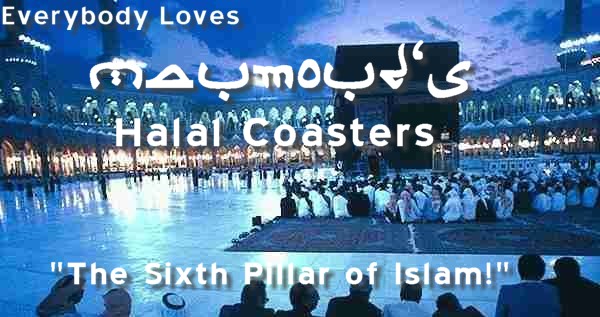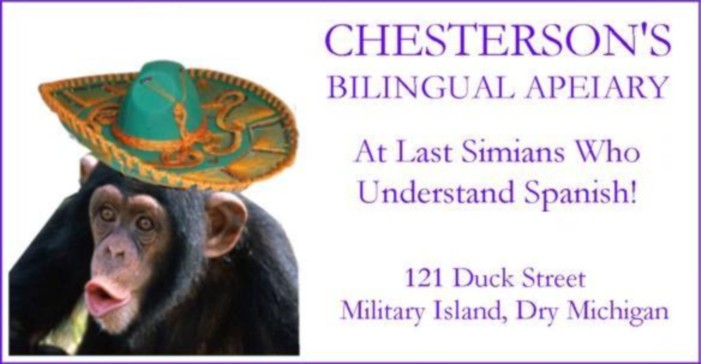Food in the Lives of Manorial Peasants

Dr. Scott Birdseye is the world’sforemost autodidact.
His manyworks include the notable tomes The Deities’ Chariots
and Deities from the Cosmos.
European society in the Middle Ages was dominated by a rigid structure which dictated nearly ever aspect of the people’s lives. This arrangement held the most power over the lives of the society’s lowest strata and thus, for the common laborers, life was defined by monotony and the endless struggle of physical existence. These aspects of peasant life on the manor are most evidently illustrated by the details of the commoners’ diet.
Peasants’ lives revolved around not only the ever continual production of food, but also around the necessity to meet the basic needs of survival. Thus, food was the central element in the lives of the peasants, acting as both their occupation and sustenance. Agricultural production was the singular purpose of the lives of the Medieval peasantry in Europe. The population of the Middle Ages was stratified into three major groupings: the nobility, the clergy and the laborers, although there were many other groups such as merchants and craftsmen whose roles did not fit with this concept.
Within the three major ranks of occupation, the nobility, whose place was to provide defense, and the clergy, who focussed on matters of religion and learning, were together only a small percentage of the population as a whole. The majority of the people were classified as Laboratores, commonly called peasants or serfs. It was the duty of the peasants to provide the actual labor which allowed the other divisions of society to exist. Thus, the life of the Medieval peasant consisted entirely of performing the tasks of farming; producing foodstuffs and other agricultural goods.
The Manor System provided for the organization of peasant labor output in Medieval Europe. The manor acted as a relatively self-contained agricultural unit, consisting of peasant homes clustered into small villages, plow lands, pastures, forests, water supplies such as rivers, streams and ponds, and the manor house, home of the manor lord, the noble land holder who ruled over the entire unit. While the primary purpose was to provide food, the manor also functioned as an economic entity to provide labor management and to produce a profit for the land holding lord. A system of mutual responsibility governed the manor; in exchange for labor the lord was expected to treat the peasants properly and not over work them. The lord was also expected not only to provide protection to the peasants as well as gifts on special occasions, but also to act as a mediator, judge and political and legal authority over his holdings.
Although the lord did provide protection and maintenance of social order, peasant life on the manor was fraught with difficulty and mired by monotony. In no way were these extremes more evident than in the peasant diet. Food on the manor was limited by what the land could provide, and for the most part, variety was unknown to the Medieval peasantry.

The diet of the commoners was essentially vegetarian and depended upon the staple crops of the particular geographical location. The most common crops were the cereals: wheat, oats, rye, and barley. Garden crops, which were cultivated on a much smaller scale, included vetches, beans, peas, onions, beets and lettuce, all of which provided some supplement to the daily menu. The most common vegetable products in Northern Europe were the cabbage and the turnip, while in the south olives and grapes were also privately grown. Despite these slight supplements, the peasants’ diet consisted mostly of grain, cooked into gruel, porridge, or coarse black bread made from rye, oats or barley.
Wheat bread was, for the most part, eaten only by the nobility. Daily fare for the commoners was often pottage, a dish which contained mostly barley or oats with some vegetables, which were slowly cooked in a large pot over the course of the entire day. Flavoring was sparse and rarely available to the peasants, although wild mustard seed, poppies and wild honey were occasionally used for seasoning, as was olive oil in Southern Europe. Pottage was usually eaten later in the day, so morning meals usually consisted of nothing more than bread and beer. The only available beverage for the Medieval peasantry was beer, which was brewed, without hops, in nearly every village. In Southern Europe wine of poorer quality was a common drink for peasants where beer was not available.
Dairy products such as cheese, eggs and butter were common in the Medieval world, although they were not always available for the peasants. Generally, sheep and goat products were the only diary foods available to the peasants, as bovine milk was reserved primarily for the nobles, although eggs were available to peasants in a limited manner. Meat was almost entirely unknown to most peasants, except at special occasions. Although many peasants raised chicken and sheep, eggs and wool were generally more valuable than meat, although older, less productive animals could be slaughtered for food.
Wild game unclaimed by the lord, which usually consisted of very small birds and fish, could also provide some meat for the laborers. As salt was both rare and expensive, peasants soaked what meat they had in lye to prevent spoilage. Despite this, meat was a rare thing in the average peasant’s life, seen only on the most important of holidays. In many ways, the calendar dictated the diet of the manor’s peasants. Although the calendar year defined the important agricultural tasks and labors, it also defined the significant holidays, feasts, and celebrations, occasions which provided the only available breaks from the tiresome monotony of the peasants’ lives.

The Lenten Breakfast, a feast which coincided with Easter was an important event in the peasants’ year. Following the penitence of Lent, the lord was expected to provide a sheep or a pig for the peasants’ observance of the feast. Martinmas was another important occasion on the manor, which peasants celebrated by slaughtering their oldest, weakest ox to provide meat for the long winter. Special events also provided peasants an opportunity to drink wine and eat wheat bread while performing the sacrament of communion. Peasants were often forbidden from taking communion more than once a year.
Manorial lords often tried to limit observance of holy days to no more than four a year, in order to keep peasants at work, but also because the lord was often expected to provide extra food for holy day feasts. Even with holiday feasts and gifts from the lord, food was always scarce for peasants, and starvation was terribly common especially during the long winter months. All year round, life for the peasants was difficult and tedious, and the few circumstances which provided any relief were fully appreciated.
In the fourteenth century, the epidemics and plagues which had ravished Europe reached their deadly crescendo, culminating in the waves of Black Death which swept across Europe erasing entire villages. A large portion of the population of Europe died from the outbreaks of plague in the mid-fourteenth century, including a great many peasants. Without readily available peasant labor, the manorial system began to decline, heralding the rise of the political and economic power of the cities. As the dominance of the manor disappeared, the agricultural system of Europe was forever altered, although the lives and diet of Europe’s common laborers changed little, although the later Middle Ages did see the rise and proliferation of taverns and other organized establishments which did cause some changes to diet.
Though diet may seem an unimportant aspect of the Medieval world, diet was in some ways an important avenue for social, cultural and political change. Spices, used to season food, were one of the main commodities traded with the East, and it was the search for new spice trading routes which provided one of the main incentives for the expansions of the later Age of Discovery. Though in later centuries, many changes in society impacted and changed diet, for the peasants of the Medieval manor, their diet was similar to their lives; bland, boring and monotonous.
